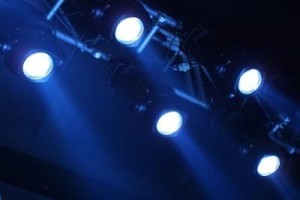 Another of my pet peeves when it comes to public speaking has to do with what I call stage sense. I have a background in drama and I know not everyone who speaks in front of an audience has been on stage as an actor. That’s why it’s important to talk a bit about stagecraft in this forum. This time let’s talk about lighting.
Another of my pet peeves when it comes to public speaking has to do with what I call stage sense. I have a background in drama and I know not everyone who speaks in front of an audience has been on stage as an actor. That’s why it’s important to talk a bit about stagecraft in this forum. This time let’s talk about lighting.
If your audience is struggling to see your face clearly it’s hard for them to fully engage. As I’ve said before, when you speak you’re speaking with your whole body. Your face is particularly important in this equation! I’ve seen speakers before who will comment on the lights. DON’T DO THIS! The technical aspects of staging are best when the audience isn’t consciously aware of them. This includes lighting. You should have enough light to be visible and in front of a large audience that means a lot of light. Squinting, shielding your eyes or actually commenting on how bright the lights are is amateurish and distracting. Practice keeping your eyes open in bright light. Be aware of where the light falls on the stage and stay in the light. When you wander into shadows you risk losing the audience.
In some cases there’s not enough light. Not every venue is a stage with specific lighting. As much as it is within your control find the brightest spot in the room to stand when you talk. Try not to have light behind you with no light in front of you to compensate. I once visited a team of two presenters running a program for us in Puerto Rico. The room was po0rly set up for presentations and they were rookie presenters. They had purchased some cheap torch lights to help light the ‘stage’ area but they were placed at the back of the stage and still had the shades on. The light was cast up on the wall on either side of the back of the stage. When talking to the audience they appeared to be in total darkness!
In that case I bought the brightest bulbs I could find, cut the plastic shades in half, lined them with aluminum foil as a reflector and to block the light bulb from the audience, moved the lamps to the front of the stage and directed the foil reflectors toward center stage. It wasn’t the best solution, but the audience could now see the presenters face.
When you’re presenting do as much as you can to see that you are in the light. If you see to that detail your audience will see you.
Leave a Reply